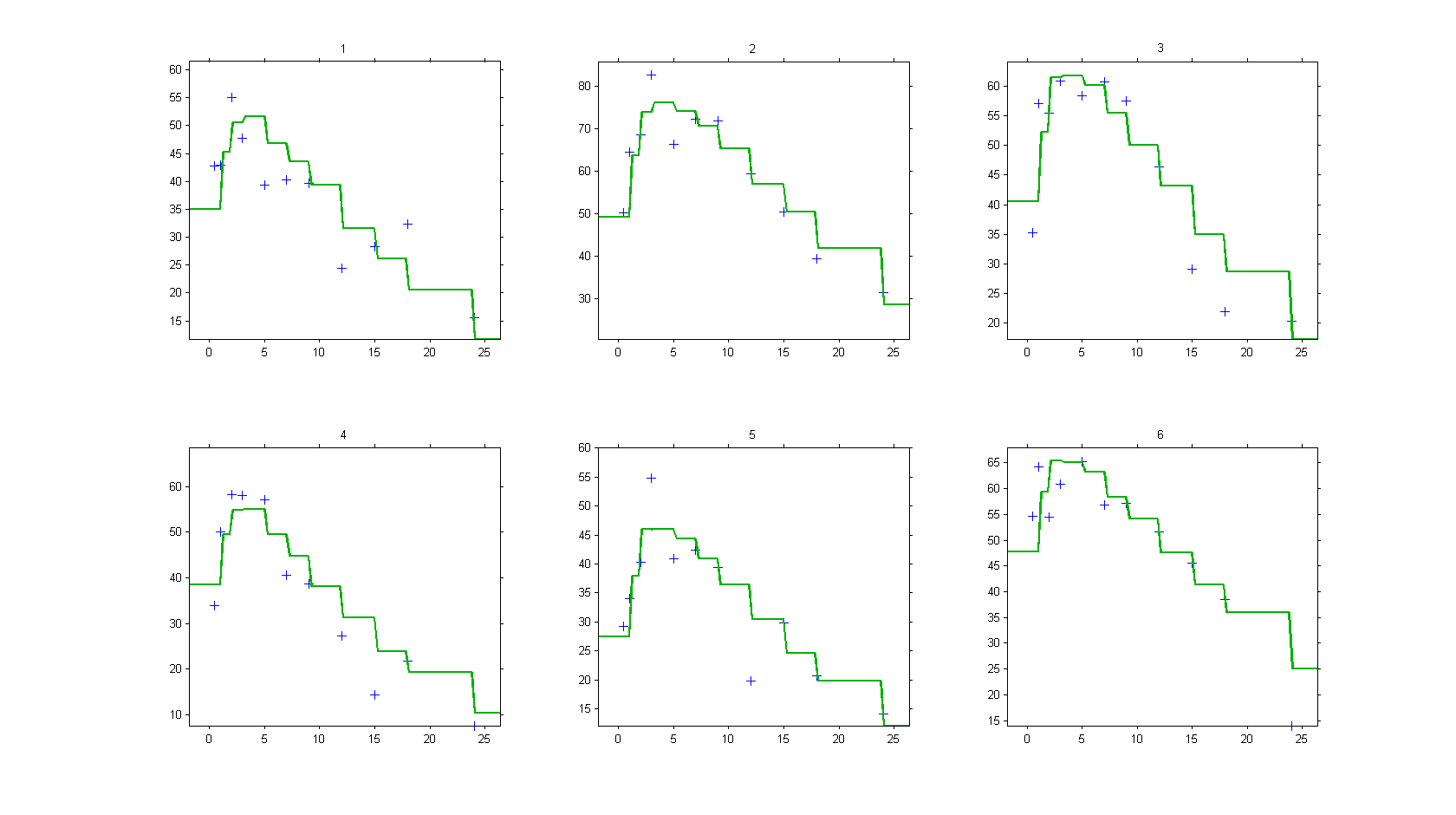Objectives: learn how to define and use regression variables (time varying covariates).
Projects: reg1_project, reg2_project
Introduction
A regression variable is a variable which is a given function of time, which is not defined in the model but which is used in the model.
is only defined at some time points
(possibly different from the observation time points), but
is a function of time that should be defined for any
(if is used in an ODE for instance, or if a prediction is computed on a fine grid). Then, Mlxtran defines the function
by intepolating the given values
. In the current version of Mlxtran, interpolation is performed by using the last given value:
Continuous regression variables
- reg1_project (data = reg1_data.txt , model=reg1_model.txt)
We consider a basic PD model in this example, where some concentration values are used as a regression variable:
[LONGITUDINAL]
input = {Emax, EC50, Cc}
Cc = {use=regressor}
EQUATION:
E = Emax*Cc/(EC50 + Cc)
The predicted effect is therefore piecewise constant: it changes at the time points where concentration values are provided:

Categorical regression variables
- reg2_project (data = reg2_data.txt , model=reg2_model.txt)
The variable takes its values in {1, 2} in this example and represents the state of individual
at time
. We then assume that the observed data
has a Poisson distribution with parameter
if
and parameter
if
.
is known in this example: it is then defined as a regression variable in the model:
[LONGITUDINAL]
input = {lambda1, lambda2, z}
z = {use=regressor}
EQUATION:
if z==0
lambda=lambda1
else
lambda=lambda2
end
DEFINITION:
y = {type=count, log(P(y=k)) = -lambda + k*log(lambda) - factln(k) }